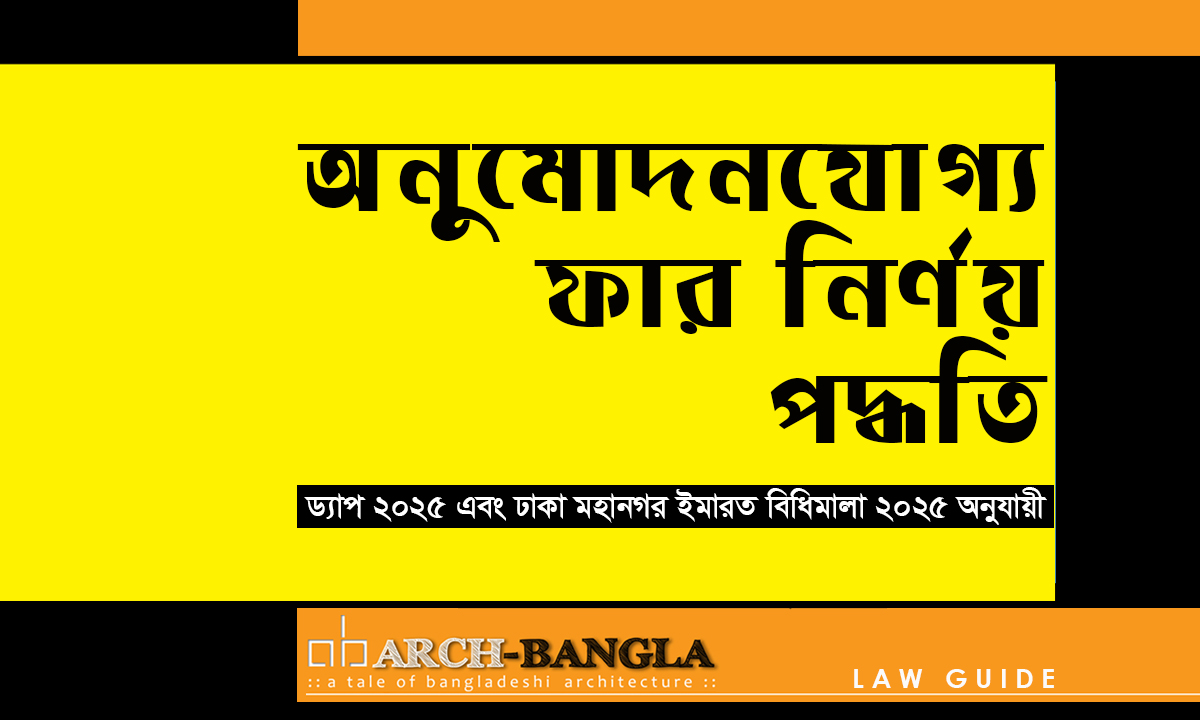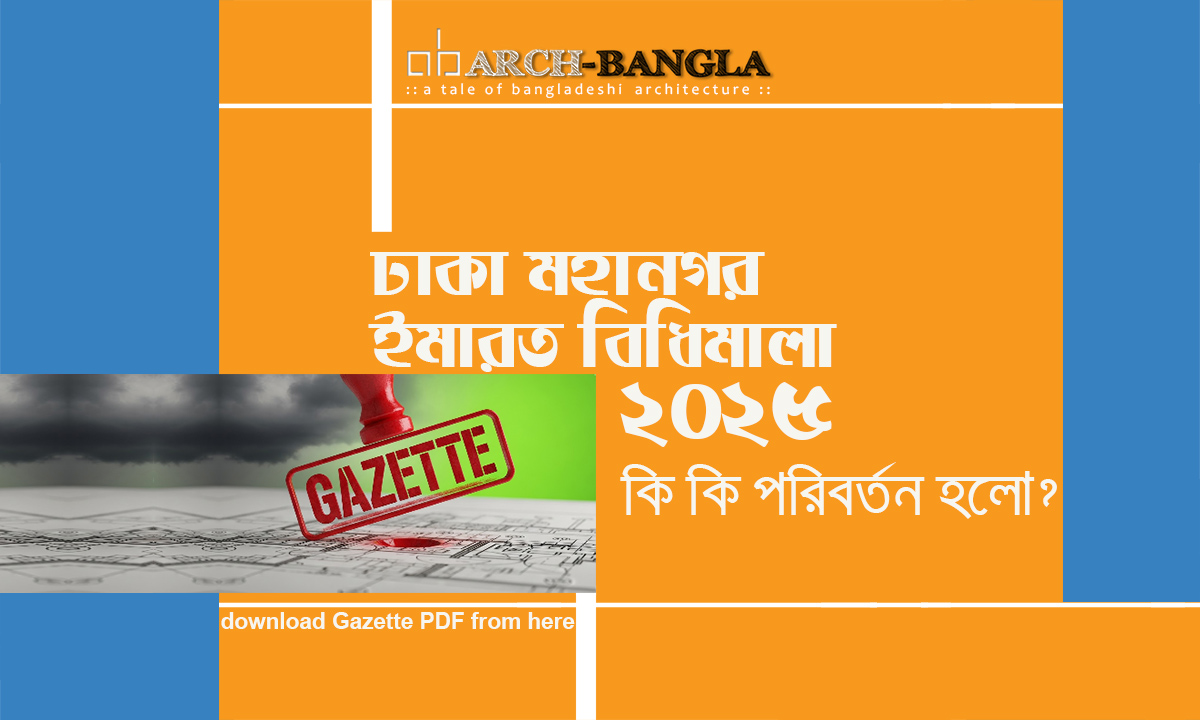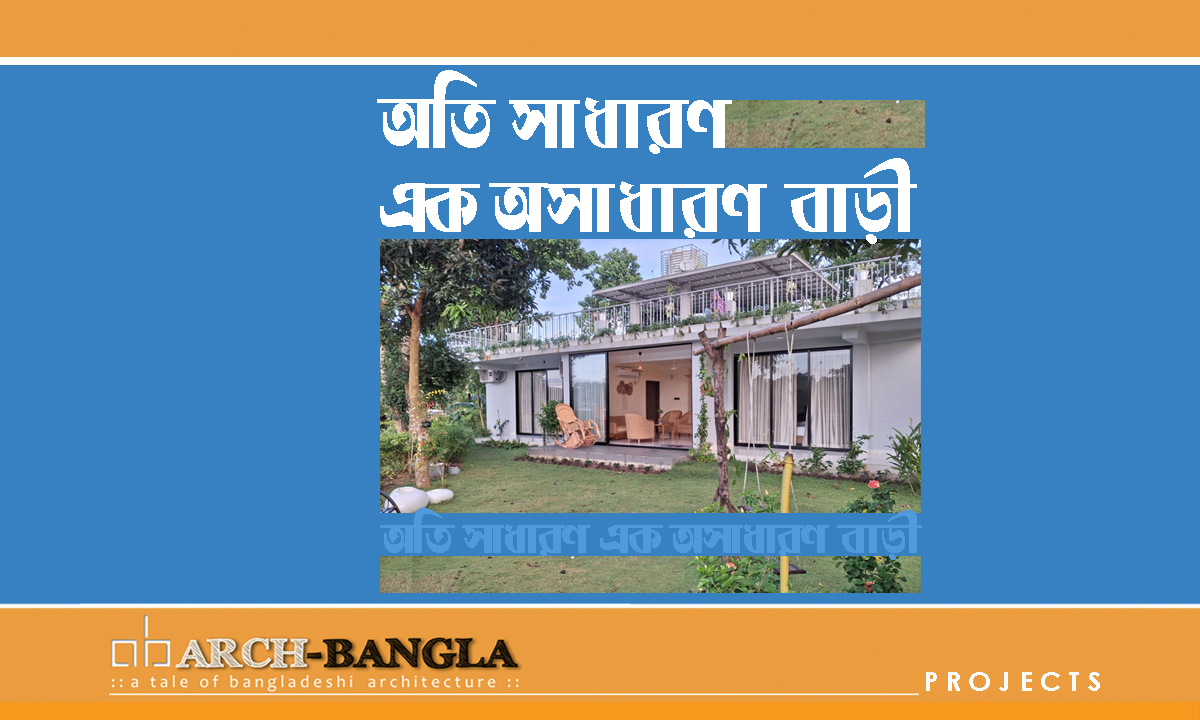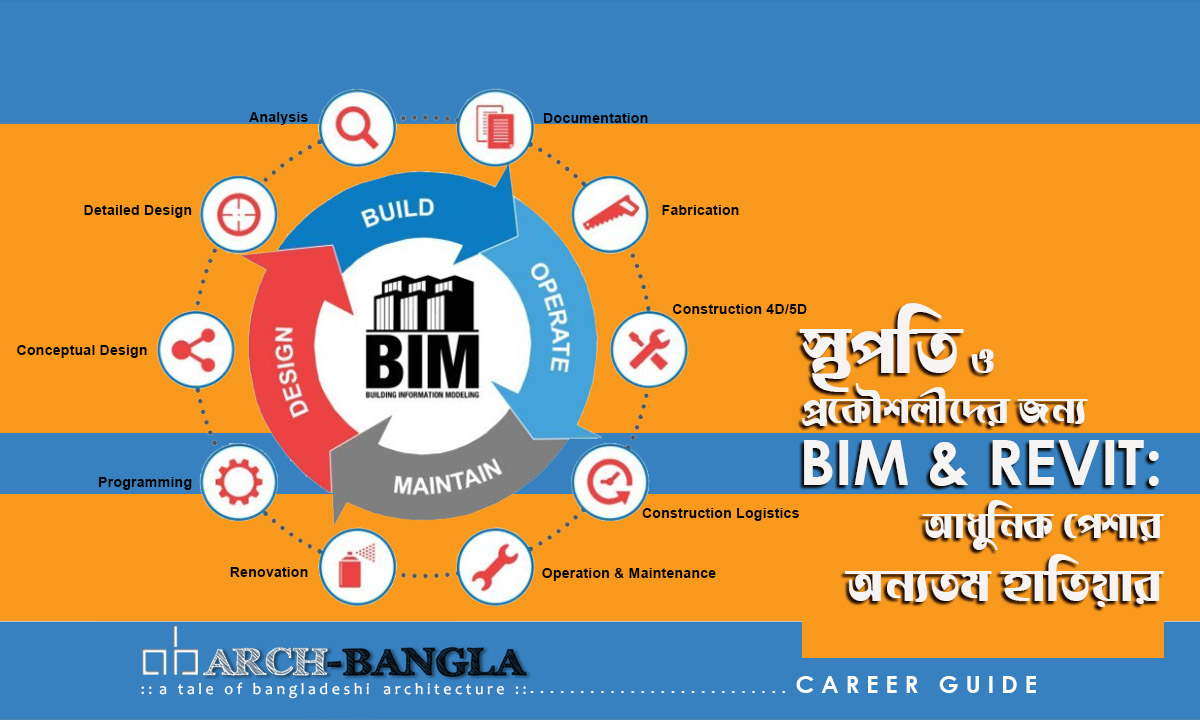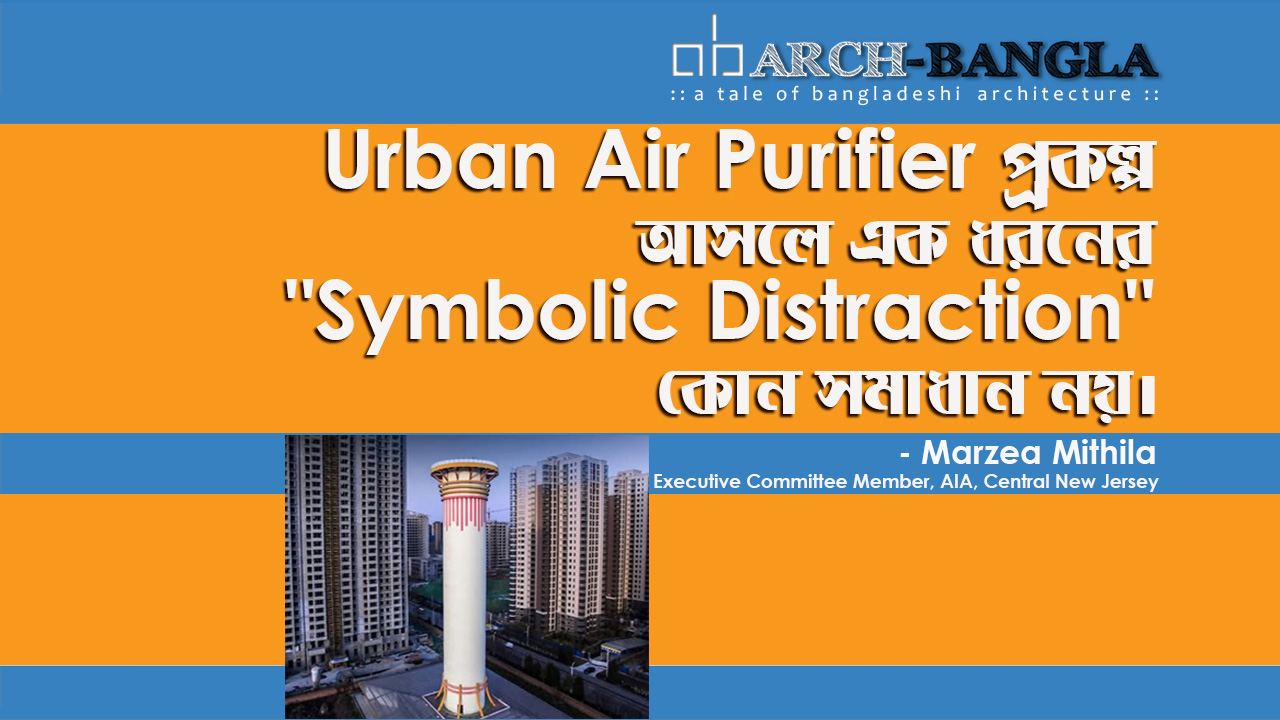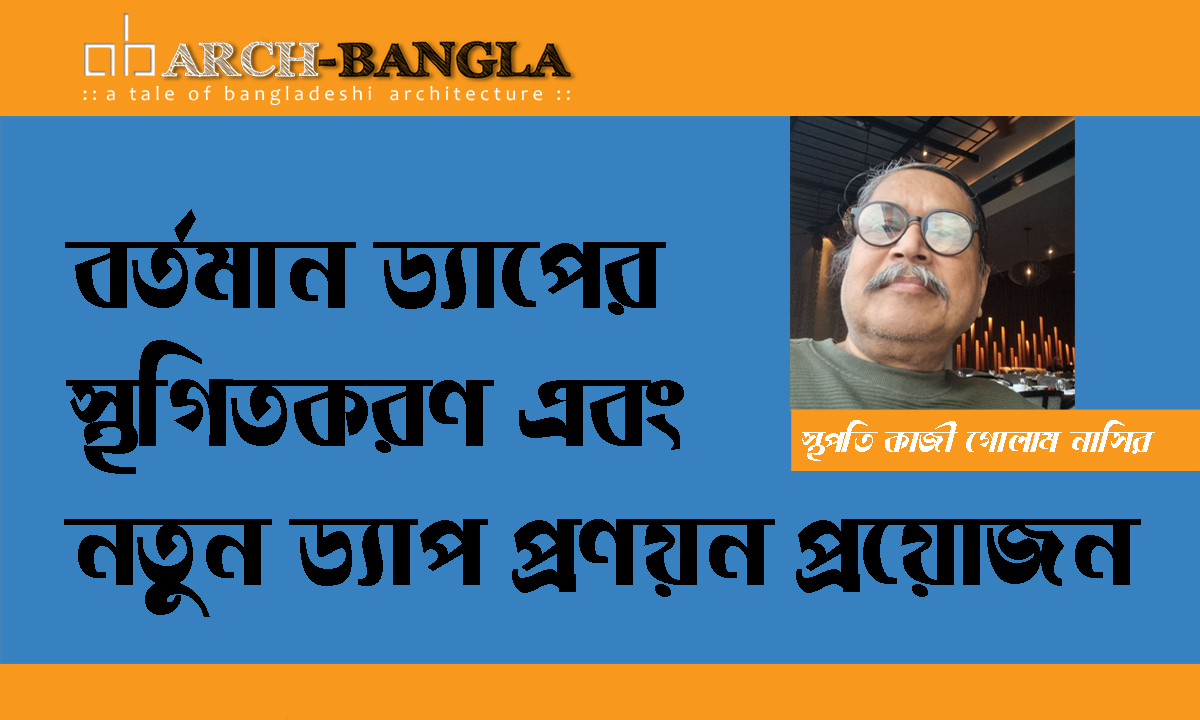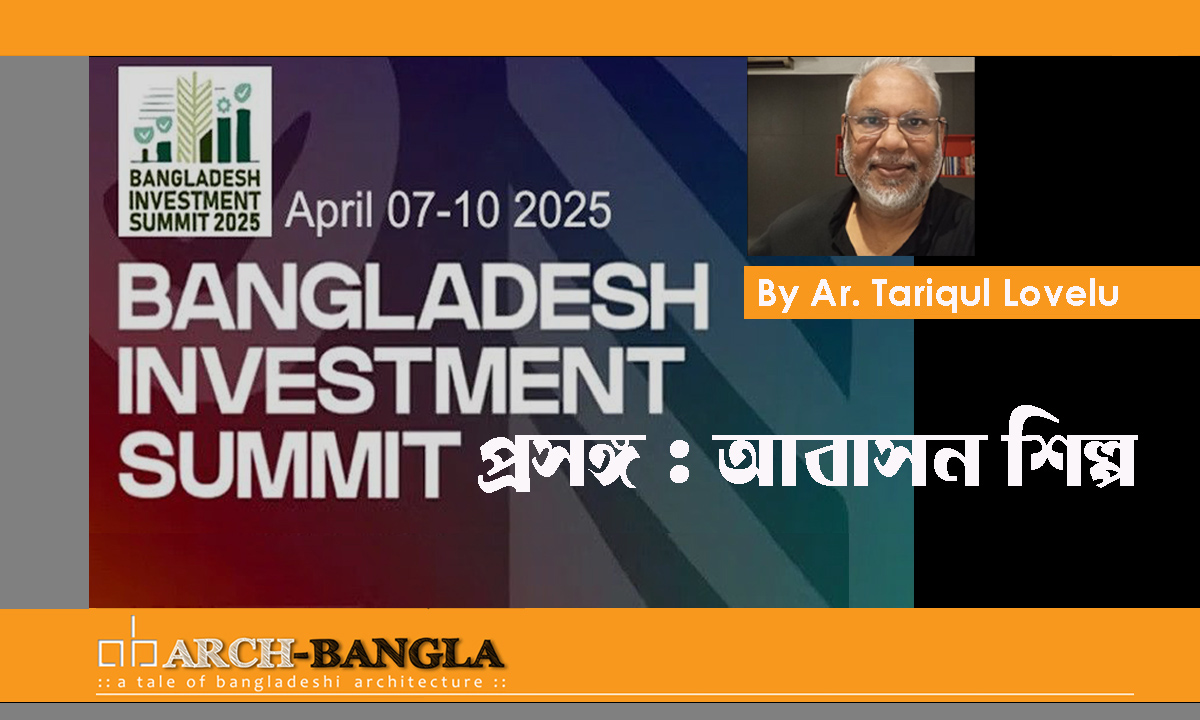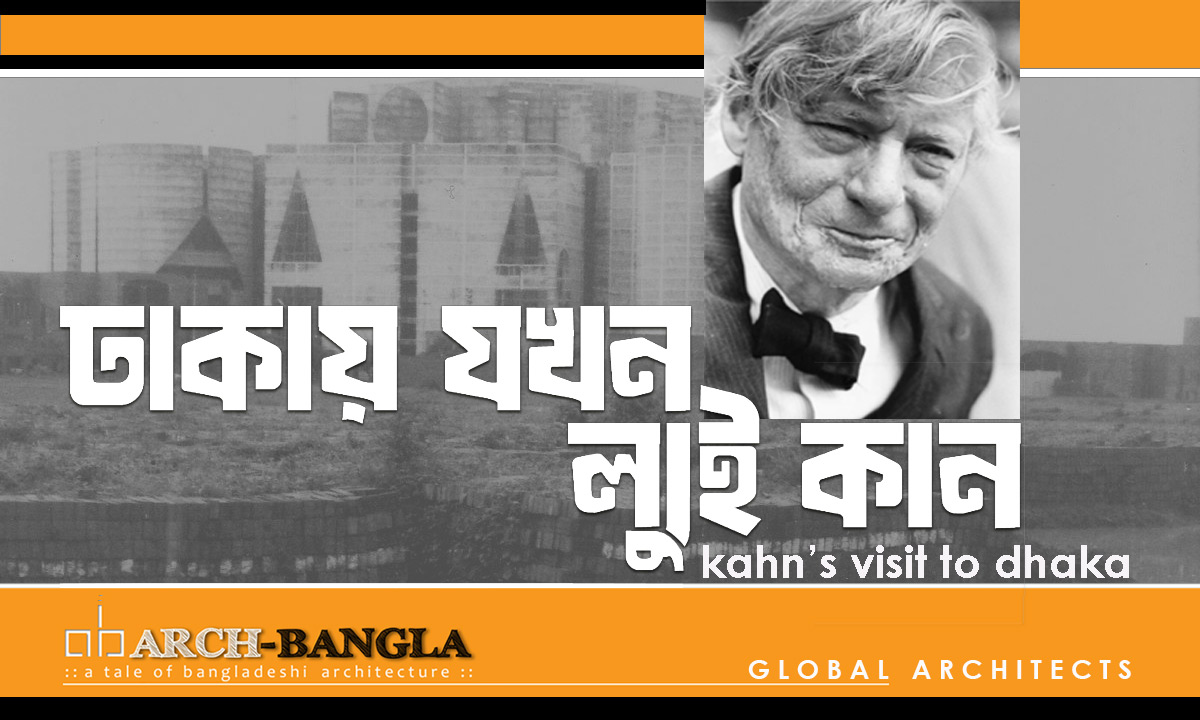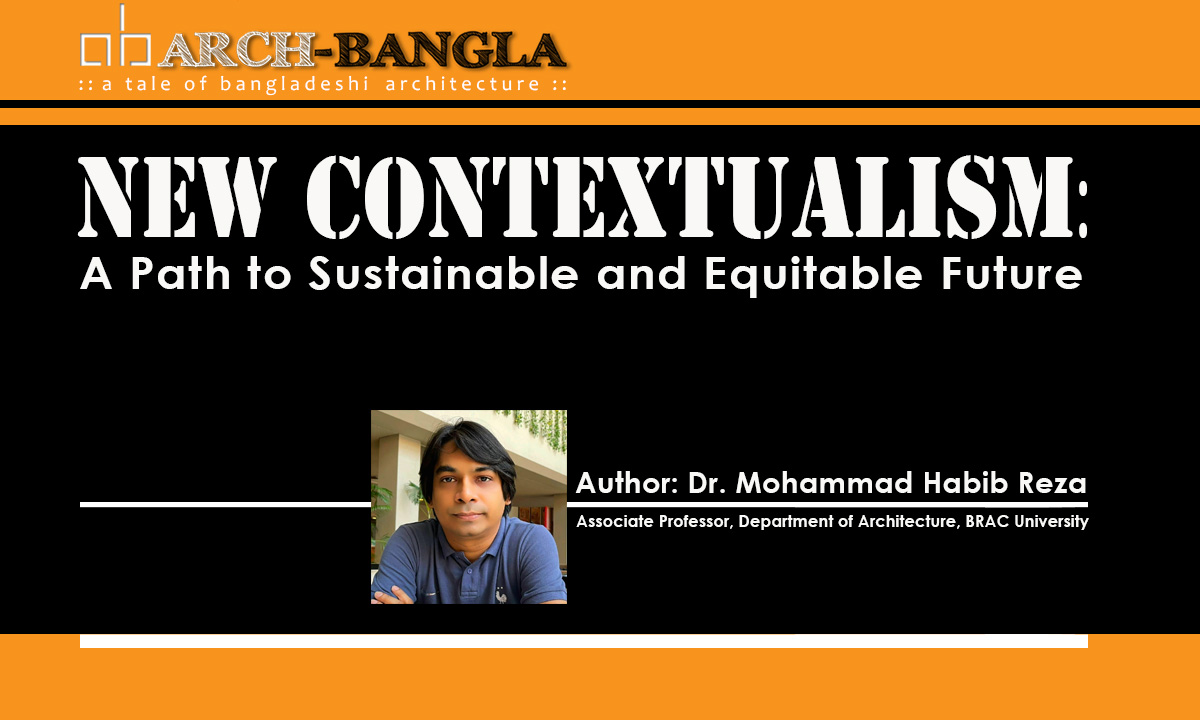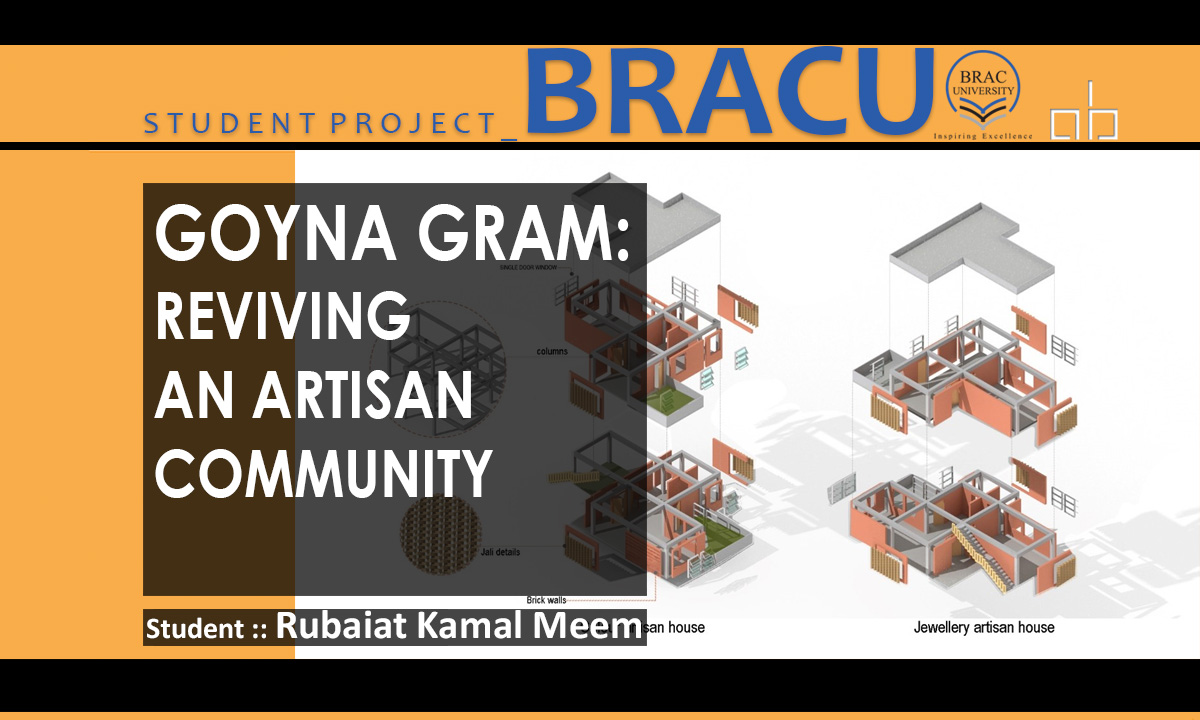GOYNA GRAM: Wanted to be as REVIVING AN ARTISAN COMMUNITY
GOYNA GRAM: Wanted to be as REVIVING AN ARTISAN COMMUNITY
Name: GOYNA GRAM : REVIVING AN ARTISAN COMMUNITY
Project Location: Bhakurta Union, Savar, Dhaka, Bangladesh.
Student’s Name: Rubaiat Kamal Meem
Project Year: Thesis 2022
Project Supervisor’s Names: Dr. Mohammad Habib Reza, Samiur Rahman, Mohammad Faruk, Iftekkhar Ahmed,Nabi Newaz Khan Shomin
Head of The Department: Professor Zainab Faruqui Ali
University: BRAC University, School of Architecture and Design.
Area: 11 Acres
Bhakurta, a renowned “Jewelry Village” with a legacy of crafting copper and brass ornaments for over three centuries, faces an uncertain future due to challenges like urbanization, cheaper alternatives, limited market exposure, and the time-intensive nature of its craft. As we reflect on the loss of other traditional arts like Jatra, Gajir pot, Pala Gan, it becomes imperative to safeguard the unique artistry of Bhakurta’s jewelry makers. This project endeavors to protect this rich cultural heritage, employing education, designer training, and the community’s knowledge and creativity to enhance and preserve the craft.

The project’s focus extends beyond the preservation of the jewelry-making tradition; it aims to elevate Goyna Gram (Jewelry Village) into a sought-after tourist destination, leveraging its cultural assets. Bhakurta jewelry stands as one among the diverse array of handloom goods in Bangladesh, contributing to the nation’s heritage. Central to this initiative is a commitment to addressing the needs of artisans and the local community, providing a platform for their growth and well-being.
The Jhillapara Canal, once linked to the Buriganga River in 2003 but now lost due to illegal filling, holds a crucial role in the project. The initiative seeks to revive this canal, introducing waterways to the area. This not only gramadds charm but also provides tourists with an alternative access route to the jewelry market, bypassing traffic congestion. The canal serves as a natural divider, shaping the site into two distinct parts. The West side accommodates public spaces, including the market, the existing union Parishad office, police office, and more. Meanwhile, the East side comprises semi-private and private areas, such as artisan housing and training centers.
The design of artisan housing reflects traditional rural architecture in Bangladesh, emphasizing courtyards for ventilation. The layout pays homage to the conventional habitat of rural Bengal, promoting a sense of community. Each housing unit features an open veranda for individual work and a communal courtyard for collaborative endeavors. Additionally, essential amenities are strategically located within a 15-minute radius.

The project follows a theory called NEW CONTEXTUALISM, which means it thinks about the bigger picture when designing, trying to make solutions that last and work well.. Five entry points in the Bazar area are aligned with existing walkable roads and community entrances. Pedestrian-friendly roads enhance the market area, while a designated route for heavy vehicles ensures efficient traffic flow. A central road connects the two artisan communities within the site. The use of local, sustainable brick and brick jali (lattice) contributes to the project’s environmental friendliness, enhancing ventilation and lighting.

As we reflect on the significance of the Goyna Gram project, it becomes evident that it is not just about preserving the past; it is about shaping a vibrant future where tradition and innovation coexist harmoniously. The project stands as a testament to the resilience of cultural heritage and the transformative power of community-led initiatives. Through its thoughtful and strategic interventions, it paves the way for Goyna Gram to reclaim its identity and become a shining example of sustainable cultural preservation.
In essence, the project pays homage to the generations of jewelry artists who have shaped Bhakurta’s industry for centuries. The design solution represents a natural evolution of critical components within the jewelry maker community, with enhancements that amplify its potential. Beyond the immediate community, the initiative aims to raise awareness and appreciation for traditional handcrafted goods, serving as a source of income not only for artisans but for the entire country. Bhakurta’s journey through this project becomes a testament to the resilience of cultural heritage in the face of contemporary challenges.

